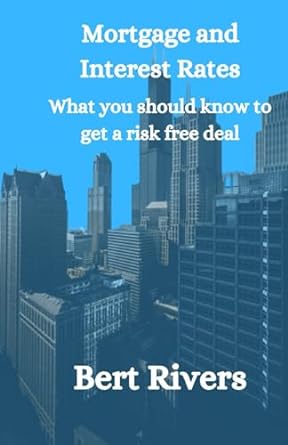Question
Please answer EVERY question. If you don't want to, then let someone who will answer this, thank you! 1.Suppose a stock currently has a market
Please answer EVERY question. If you don't want to, then let someone who will answer this, thank you!
1.Suppose a stock currently has a market price of $75 per share. At that price, you can afford to buy 500 shares. The initial margin of a stock is 50%. One year later, you sell the stock for $105 per share. Assuming you borrowed the maximum amount, and that the margin interest rate is 10%, what was your return on the stock? 26% or 80% or 70% or 40%
2.Suppose a stock currently has a market price of $20 per share. At that price, you can only afford to buy $100 shares. The initial margin of a stock is 50%. One year later, you sell the stock for $30 per share. Assuming you borrowed the maximum amount, and that the margin interest rate is 0, what was your return on the stock? 75% or 10% or 100% or 50%
3.You are considering investing in a bond and have decided to invest in either a municipal bond or a corporate bond (not both). The municipal bond has a rate of return of 7.1%. Assuming you are in the second highest tax bracket (24%), what rate of return would the corporate bond have to earn to make you indifferent between the two bonds? 11.89% or 9.34% or 7.85% or 10.72%
4.Which of the following financial markets sells the least risky class of assets? Equity Market or Money Market or Bond Market or Indexes
5.What is the difference between a Limit-Sell Order and a Stop-Loss Order? Limit-sell orders sell if/when a stock price increases above a predetermined stock price, while stop-loss orders sell if/when the price decreases below a predetermied stock price.
Limit-sell orders buy if/when a stock price increases above a predetermined stock price, while stop-loss orders buy if/when the price decreases below a predetermied stock price.
Limit-sell orders buy if/when a stock price decreases below a predetermined stock price, while stop-loss orders buy if/when the price increases above a predetermied stock price.
Limit-sell orders sell if/when a stock price decreases below a predetermined stock price, while stop-loss orders sell if/when the price increases above a predetermied stock price.
6.The ease with which an asset can be converted into cash is a measure of ________________________.
inflation or liquidity or expected value or maturity
7.Suppose you are pessimistic about Apple Stock. The initial margin is 50%. You short sell one share today for $183 and then the price decreases to $100 over the following year. A dividend of $1 per share is paid before you buy back at $152. What is our return on the short sale of this investment?
18.46% or 32.79% or 27.30% or 11.79%
8.Which of the following companies are most likely to default on their debts?
Company A: Moody's bond rating of BBB1
Company B: Moody's bond rating of B2
Company C: Moody's bond rating of AAA
Company D: Moody's bond rating of AA3
A or B or C or D
Step by Step Solution
There are 3 Steps involved in it
Step: 1

Get Instant Access to Expert-Tailored Solutions
See step-by-step solutions with expert insights and AI powered tools for academic success
Step: 2

Step: 3

Ace Your Homework with AI
Get the answers you need in no time with our AI-driven, step-by-step assistance
Get Started


